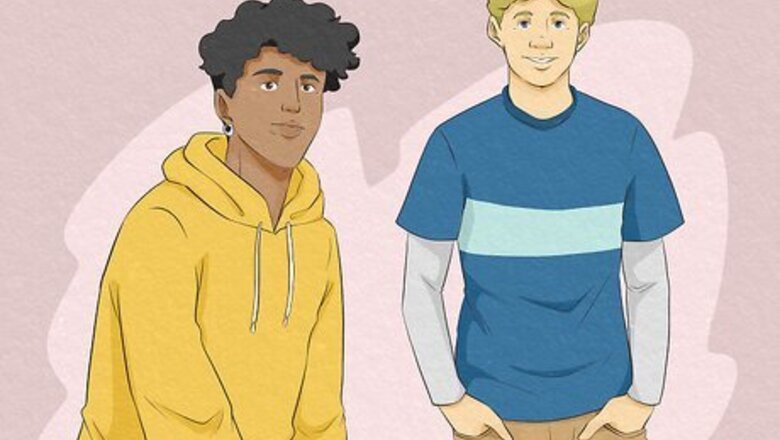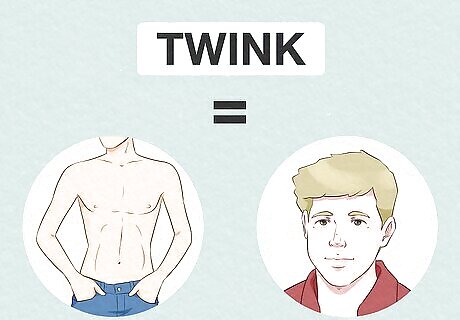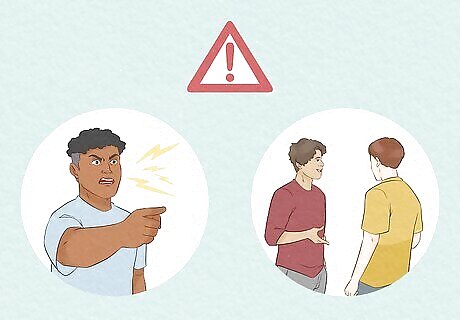
views
What does twink mean?

A “twink” is a young gay man with a slim, boyish figure. According to the classic definition of the word, a twink is usually in his late teens to his early 20s, although he may just appear to be. Twinks have slim, petite, and/or effeminate body types and boyish features with no facial hair. They tend to have little to no body hair, either, helping them appear very youthful, which is part of their allure. The term “twink” was once specifically reserved for slender, white, and blonde members of the gay community, although that definition has become more inclusive in recent years. Twinks were once considered the most desirable gay demographic, but changing attitudes about inclusivity, preferences, and aesthetics have allowed for the shift toward different body types and looks.
How “Twink” is Used

People use “twink” to refer to slender, baby-faced gay males. Although twink is generally used as a compliment in LGBTQ+ circles, it can be misused as a slur, so only refer to someone as a “twink” if they use that label themselves and are comfortable with it. The term can also be used to describe cis-gendered men whose looks match the “twink” aesthetic. For example, Andy Cohen famously described the British boy band, One Direction, as “twinks” in 2012, despite their sexual orientation.
Is “twink” offensive?

It’s not inherently offensive, but it can be weaponized as a homophobic slur. Just like so many other terms belonging to certain marginalized communities, the term “twink” can be used as a compliment or misused as a hateful insult. Depending on the context, a gay man can describe another gay man as a twink with positive or negative connotations. Moreover, a cis-gendered person may use “twink” in a derogatory way to describe a man as overly effeminate, weak, or to spread any other negative stereotypes about gay men. Similar to the word “queer,” which has been recently reclaimed by some members of the LGBTQ+ community, “twink” may be used in both positive and negative ways. Some people still bristle against the term “queer” since it has such a dark history of “othering,” discrimination, and violence, and the same goes for “twink.” Don’t call someone you don’t know well a twink as they could take it offensively, leading to a hurtful and damaging experience. On the bright side, many self-proclaimed twinks respond to the term proudly, rendering it more positive and neutral overall than negative.
Origins of “Twink”
The term “twink” is thought to date back to the 1950s. According to the Oxford English Dictionary, “twink” was first used in the 1950s, although its true origins are uncertain. Some people speculate that “twink” was inspired by “twank,” a British slang term from the 19th and 20th centuries used to describe young male sex workers. Other possible origins include “twinkletoes,” a derogatory term for gay men used in the early 1900s, and the popular snack cake, Twinkie. While the correlation between Twinkies and twinks is not definite, some people think this is where the blonde and white stereotype of twinks began.
“Twink” Archetypes in Pop Culture

Archetypical “twinks” have been a part of popular media for decades. This demographic of young, effeminate men, often referred to as “twinks,” have cemented their place in film, TV, and music all over the world. Here are some of the most widely recognized examples of young men who embody big twink energy: After he starred in the gay coming-of-age film, Call Me By Your Name, Timothée Chalamet is considered by many to be the modern king of twink, although he has not commented on his royal status. Australian pop singer, Troye Sivan, broke out into the scene with his hit single, “One of Your Girls,” making him a household name in the twink community. Legendary music icon, Prince, was also called a twink during his prime, giving the twink movement a face as early as the 1970s.
“Twink Death” Meaning

“Twink death” refers to aging out of being classified as a “twink.” “Twink death” first entered the zeitgeist in the 2020s, when a Twitter user uploaded two side-by-side images of Leonardo DiCaprio, one from the 1990s and a more recent one. The caption read: “Twink death is a terrifying thing.” In essence, “twink death” underscores the idea that gay men should stop being labeled as twinks after a certain age. There’s been a ton of controversy surrounding “twink death.” Some people think that the term “twink death” is ageist, while others firmly uphold their belief that “twink” is an aesthetic and lifestyle, unaffected by age. Another issue is how highly “twinks” are regarded among gay men, indicating that a “twink death” is the kind of fall from grace that less desirable members of the community would never understand. Similarly, “twink death” hints at fatphobia in the community, since being a “twink” is largely defined by having a slender body type and people tend to gain weight as they age. However, there are silver linings to potentially aging out of twinkdom, with some people preferring the term “DILF birth” over “twink death.” “DILF” stands for “dad I’d like to f**k.” However, the DILF in question doesn’t have to be a real dad— just daddy-aged.
Other Popular Slang Terms in the LGBTQ+ Community
Twink is one of many descriptors in the queer community. If you think “twink” is cute and clever, there’s more where that came from! The LGBTQ+ community doesn’t shy away from colorful and creative nicknames, most of them meant to be used playfully, neutrally, or simply categorically to distinguish the twinks from the bears from the dolphins. Not sure what they all mean? Here are some other definitions: Twunk: Combining “twink” and “hunk,” twunk is described as a more muscular, masculine version of a twink. Bear: One of the most widely known gay classifiers, the archetypal bear is a burly and cuddly guy with lots of facial and body hair… the opposite of a twink! A cub is a smaller, younger, less hairy version of a bear. Otter: An otter is often described as being between a twink and a bear— not quite as young and slender as a twink but not as large or hairy as a bear. Dolphin: “Dolphins” are closely related to “twinks” but are generally viewed as being more athletic. “Twink” implies a naturally slim physique, while “dolphin” suggests someone who works out to achieve a similar physique.














Comments
0 comment